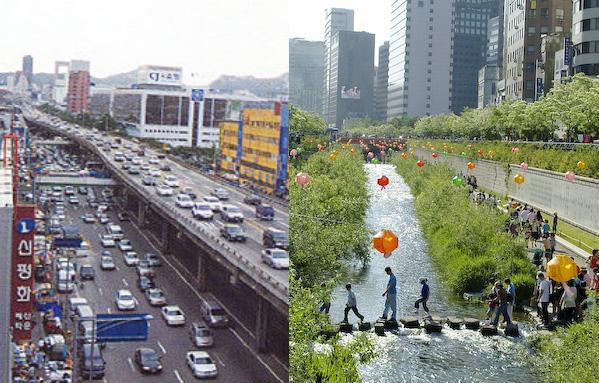A proposal for transforming the 1940s Iberville complex in downtown New Orleans into a denser mixed-income neighborhood, hinges on removal of I-10, an elevated highway, which in the 1960’s replaced Claiborne Avenue, a broad tree-lined boulevard that was then a bustling African-American commercial strip. An article published this week in the New York Times Critic’s Notebook column highlights the project, and the idea, first proposed by the Congress for the New Urbanism, to replace the elevated expressway, with an at-grade urban boulevard. The city received a federal grant of $2 million last October to study the teardown option.
CNU’s report states that “Demolition of the aging elevated expressway would remove an eyesore that has dominated and damaged the Tremé/Lafitte landscape for almost 50 years and held back serious attempts to spur economic development. The destruction of the oak-lined avenue and construction of the elevated expressway in the 1960s, was intimately tied to the overall decline of Claiborne’s surrounding neighborhoods and occurred against the wishes of the area’s largely disenfranchised African-American residents….”
The full report, “Restoring Claiborne Avenue”, released in July 2010, concludes:
o Traffic is adaptable. Urban traffic (i.e., drivers of motor vehicles) is highly adaptable and will divert to the best route available, especially when there is a highly connected grid of streets. When a high‐speed urban freeway is available, traffic is drawn to that corridor due to the higher speeds. In cities that have experienced a freeway removal, either planned or through a catastrophe, traffic has quickly adapted and redistributed itself to other routes.
